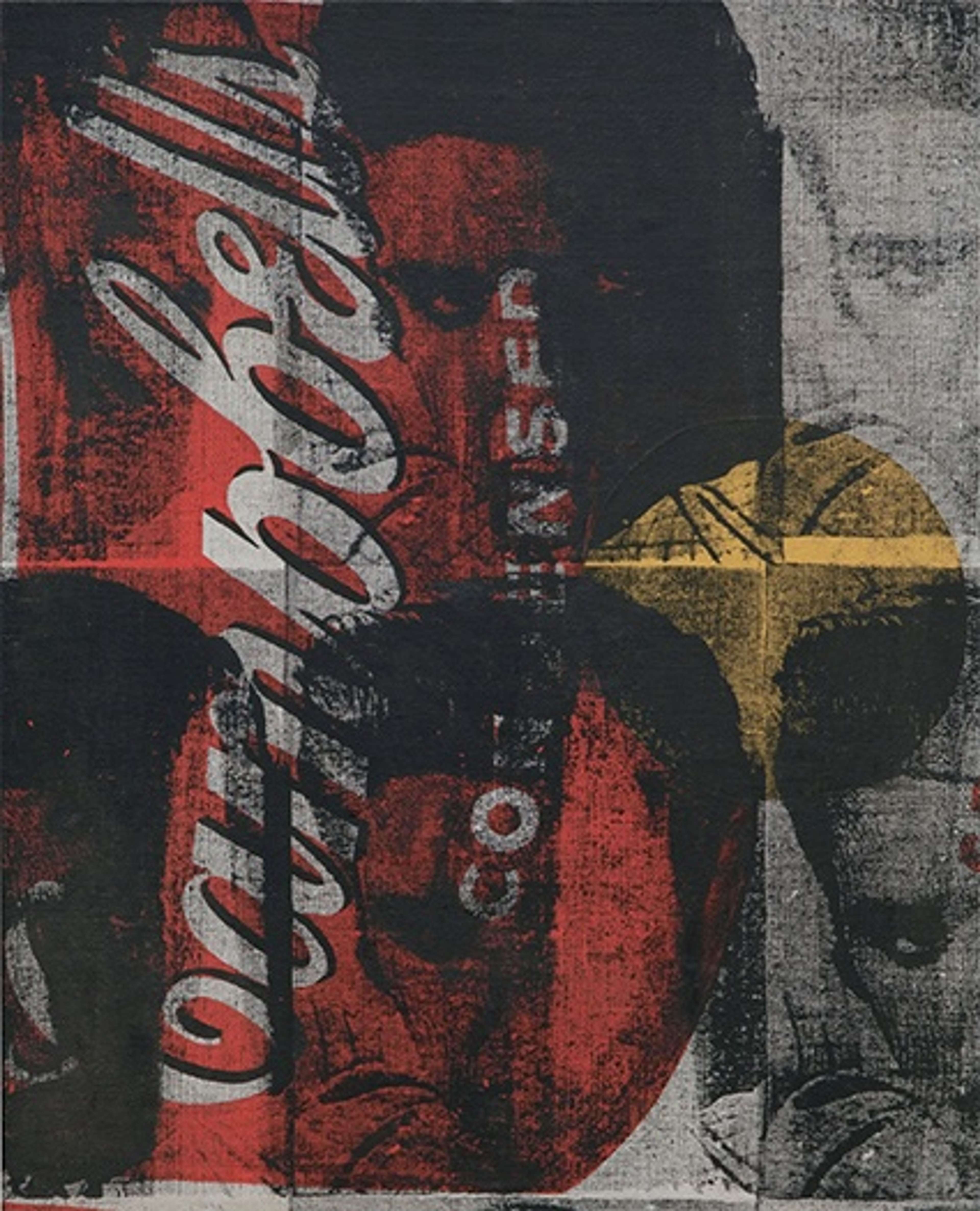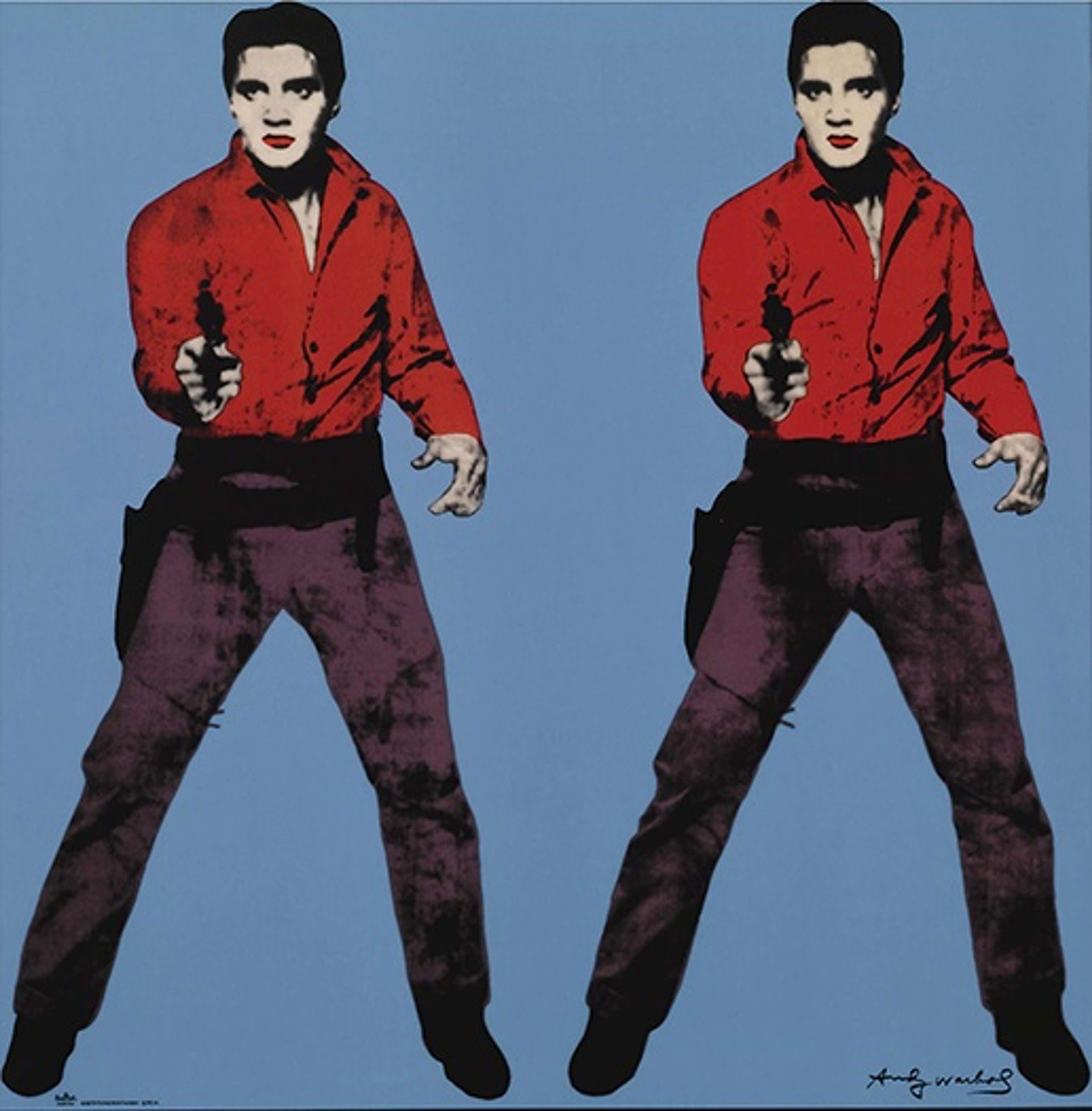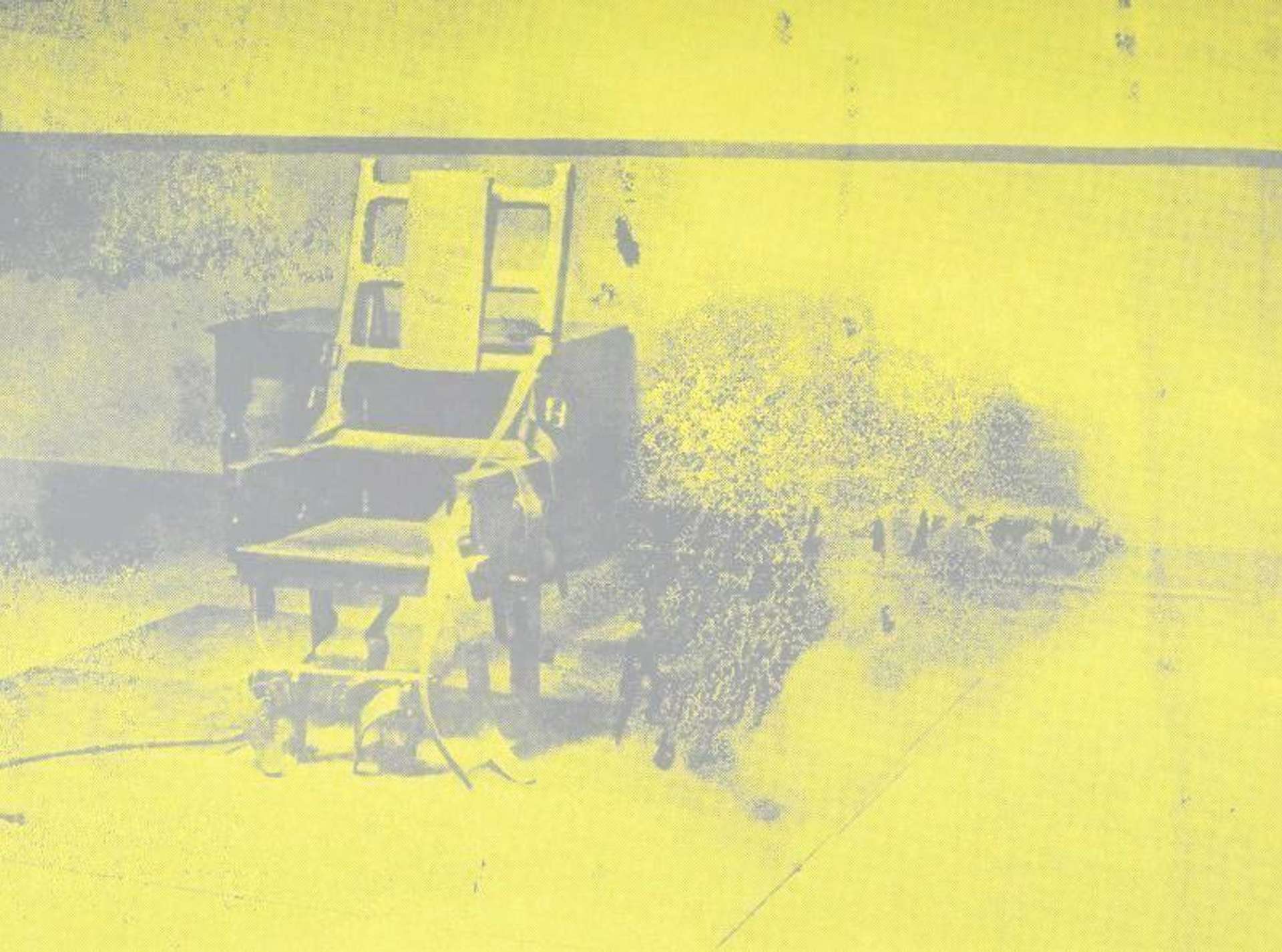 Image © Nathan Hughes Hamilton via Flickr, CC BY 2.0 / Triple Elvis © Andy Warhol 1962
Image © Nathan Hughes Hamilton via Flickr, CC BY 2.0 / Triple Elvis © Andy Warhol 1962
Interested in buying or selling
Andy Warhol?

Andy Warhol
487 works
The King of Pop Art meets the King of Rock ‘n’ Roll in Andy Warhol’s paintings of Elvis Presley, which are now some of his most expensive works at auction. Here are 10 quick facts.
Why did Warhol paint Elvis as a cowboy?
Warhol made his first Elvis in 1963. Warhol created his original painting of Elvis from a studio portrait and intended to show it at his exhibition that year at Los Angeles’s Ferus Gallery. The gallery, however, wanted something more dramatic. So instead, Warhol made a new version of Elvis as a gunslinging cowboy. He created 23 paintings of these Elvis paintings for the Ferus Gallery exhibition – they are now Warhol’s most famous and recognisable Elvis artworks.
 Andy Warhol in his Factory with prints of Elvis. (Image © Ronald Douglas Frazier)
Andy Warhol in his Factory with prints of Elvis. (Image © Ronald Douglas Frazier)But Warhol referenced Elvis as early as 1956
During his work as a commercial illustrator, Warhol created a collage of shoe drawings for Life magazine in which he named each footwear after a celebrity. The (misspelt) ‘Elvis Presely’ shoe was a golden swashbuckler’s boot with a floral rosette.
Warhol’s Elvis portraits are based on a publicity shot
The cowboy image comes from a publicity photograph for the 1960 Western film, Flaming Star. Elvis plays the half-Texan, half-Native American rancher Pacer Burton, who becomes torn between his loyalty to both worlds.
For Warhol – the more Elvises, the merrier
Many of Warhol’s Elvis portraits were repeated in twos or threes on the same canvas, known as the “Double Elvis” and “Triple Elvis”. Warhol had created the first Elvis portraits on one long, continuous canvas – he wanted the singer to appear like he was moving back and forth, as if on a film strip. The single canvas was later divided up into separate works, made up of many single or overlapping images.
The largest Elvis is 36 feet long
Elvis (Eleven Times) is Warhol’s largest painting in the Elvis series. The painting stayed in Warhol’s workshop from its completion in 1963 until the artist died in 1987. It is now on display at the Andy Warhol Museum in Pittsburgh. Many have also interpreted this repeated pattern as a nod to the concept of commercialism in Warhol work, were the repeated motif is used across his oeuvre in works such a Marilyn and Campbell’s Soup.
 Elvis (Eleven Times) by Andy Warhol on display. (Image © klimari1 (JUST SHOOT IT! Photography) / Elvis (Eleven Times) © Andy Warhol 1963)
Elvis (Eleven Times) by Andy Warhol on display. (Image © klimari1 (JUST SHOOT IT! Photography) / Elvis (Eleven Times) © Andy Warhol 1963)Warhol’s Elvis mocks Hollywood
“I always have to laugh, though, when I think of how Hollywood called Pop Art a put‑on! Hollywood?? I mean when you look at the kind of movies they were making then—those were supposed to be real???” complained Warhol in his memoir POPism.
The Elvis paintings have been interpreted as a comment on the mass-produced nature of Hollywood films, as well as Elvis himself. By 1963, the singer had starred in a string of mediocre films, which the studios were churning out like a line of Campbell soup cans.
Warhol has combined Elvis with Campbell’s Soup Can
To drive home the mass-production comparison, Warhol made Campbell’s Elvis in 1964. The painting blends repeating images of Elvis’s face with a can of ‘Campbell’s Condensed’, commenting on the joint rise of consumerism and celebrity culture.
Campbell’s Elvis was first bought by the Surrealist artist Salvador Dalí, who was a friend of Warhol’s.
 Campbell’s Elvis © Andy Warhol 1962
Campbell’s Elvis © Andy Warhol 1962A signed edition of Elvis was released after Warhol’s death
Elvis (Blue) is a screen printed porcelain wall plaque, produced by Warhol’s estate with pottery studio Rosenthal. It was released in 49 signed editions, showing both Warhol’s signature and Rosenthal’s stamp.
 image © Sotheby's / Elvis Blue © Andy Warhol 1982
image © Sotheby's / Elvis Blue © Andy Warhol 1982A museum visitor has fallen into an Elvis painting
In 2016, a visitor at the San Francisco Museum of Modern Art (SFMOMA) tripped and fell backwards into one version of Triple Elvis [Ferus Type] painting… while posing for a photo in front of the work. The painting was quickly sent for conservation and the damage was reported to be “minimal”.
How much do artworks from Warhol's Elvis series sell for?
The most expensive Elvis at auction sold for $81.9 million. After nearly 40 years hidden in a private collection, another version of Triple Elvis [Ferus Type] was offered for auction at Christie’s in New York on 12 November 2014. The painting was estimated at $75 million but sold after a five-minute bidding battle for nearly $82 million.
Another Elvis artwork has sold for an even higher price via private sales. In 2008, the unique painting Eight Elvises achieved $100 million (£60.5 million). The seller was Annibale Berlingieri, an Italian collector, who purchased it in the 1960s. The buyer still remains anonymous but is speculated to be a new collector from the Middle East.




